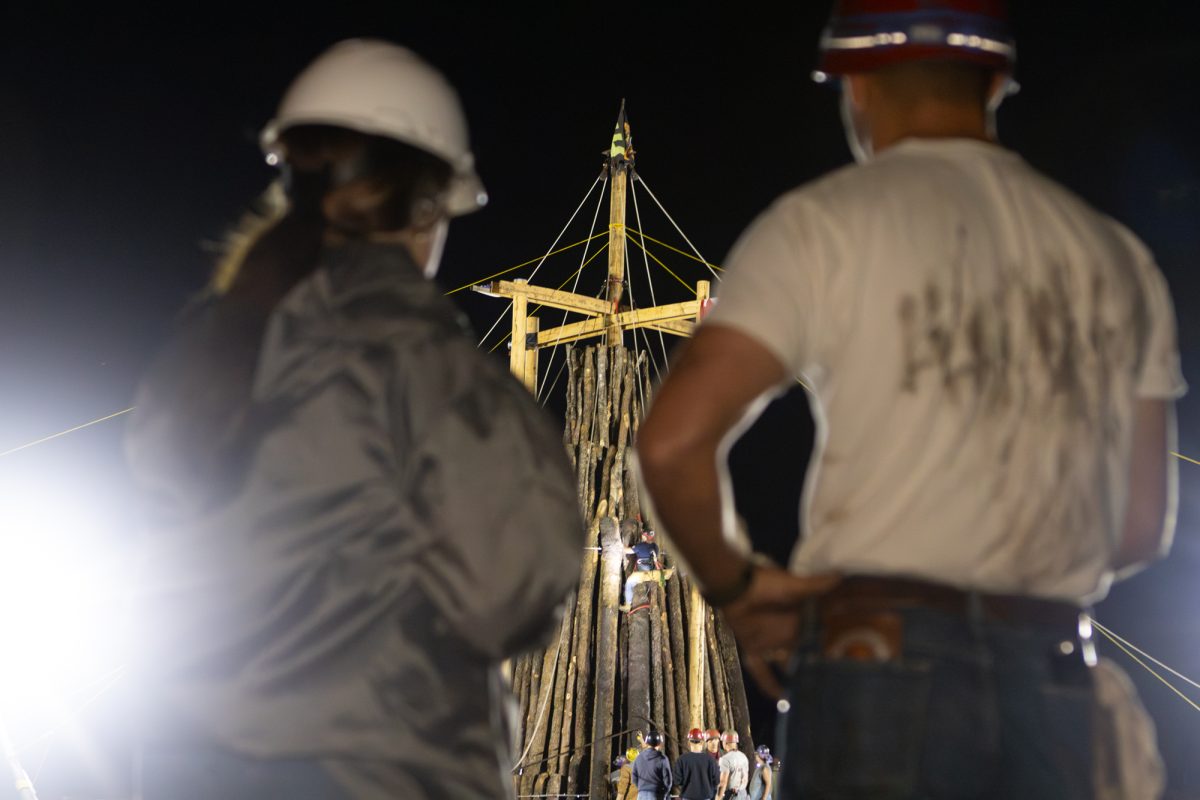Students will have the chance to revamp gameday closets without spending money at an on-campus “Dress Swap” Friday.
The Environmental Issues Committee, which participates in many environmental events, came up with the Aggie Game Day Dress Swap to not only supply women with new dresses for gamedays, but to raise awareness of the current methods used to make clothing and the harm those methods inflict on the environment.
The first Dress Swap will occur Oct. 2, between 10 a.m. and 2 p.m. in Rudder Plaza. Aggies can bring in their old dresses and trade them in to get a different gently used dress. Emily Wornson, Class of 2016 and chair of the Environmental Issues Committee, came up with the idea for the event.
“It’s going to be like shopping at a used clothes store, you turn in a dress and use it as your currency to take another dress,” Wornson said.
The Dress Swap is meant to illustrate the benefits both financially and environmentally of recycling clothing, Worson said. She said the event also aims to encourage the purchase of goods created using recycled products.
Wornson said it takes gallons of water to make clothes, especially cotton clothing because of how water-intensive the crop is.
“In making a single T-shirt, 700 gallons of water is used,” Wornson said. “That includes everything from the making of the shirt to the transportation of the shirt. Dyes in factories wash into streams and rivers, which pollutes water supplies. The dyes also kill the fish and aquatic life in the rivers, and they can soak into the soil of any nearby farms, killing the crops. If you buy used clothes, there’s no ecological footprint.”
Kati Stoddard, an instructional assistant professor of plant pathology, said despite environmental regulations in place, the environment is still affected negatively by clothing production processes.
“In the U.S., the Clean Water Act regulates the quality and quantity of discharges industries release into water bodies,” Stoddard said. “Companies must buy permits for their discharges and report concentrations of certain chemicals in their discharges. Regulators often inspect companies to ensure they are in compliance with their permits, however accidents do happen, and there is the possibility that companies could violate their permit.”
Wornson said instead of throwing old clothes away, people should donate clothes so new items can be made using recycled material.
“There are eco-friendly clothes available, made of recycled materials like cotton and plastic,” Wornson said. “It sounds weird that they’re able to use plastic in shirts, but they do and it works. The factories are in the United States too, so you know that there are no unfair labor practices involved.”
The Environmental Issues Committee Programming Director Cara Brewer, said buying clothes at secondhand shops is a good alternative to buying new clothes.
“Austin has a huge push for buying vintage clothing, so they have quite a few thrift stores,” Brewer said. “In addition to Goodwill and Navy Army, there’s Buffalo Exchange.”
Brewer said she hopes to expand the Dress Swap, but she wants to see how successful the first one is before solidifying any further plans.
“Since this is our very first Dress Swap, it’s just girl’s dresses,” Brewer said. “We’re hoping to draw a big client base, and if this one is successful our future plans are to expand it to allow guys to bring in dress shirts and girls to swap skirts.”
Brewer said she thinks there will be a good turnout.
“I know that I’m always looking for new dresses, because I’m tired of the old ones,” Brewer said. “And there’s no money involved, so I’m hoping that will really ramp it up.”
Because the Environmental Issues Committee wants to expedite the process of swapping dresses, as well as to make the event easy on the pocketbook, there will be no money involved. Any dresses left over will be donated to Goodwill or Navy Army.








